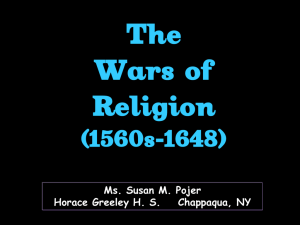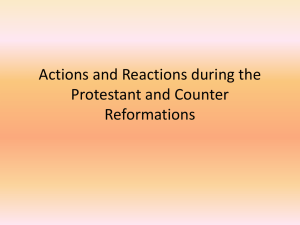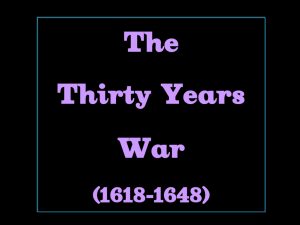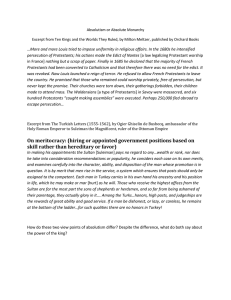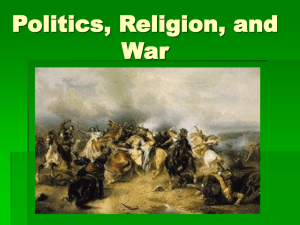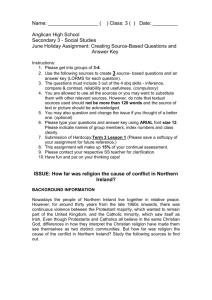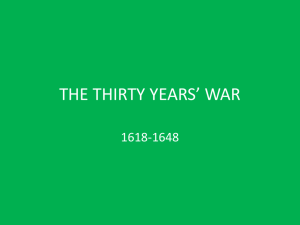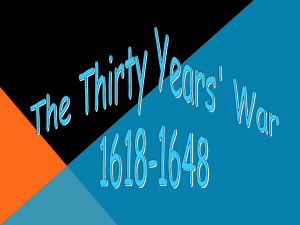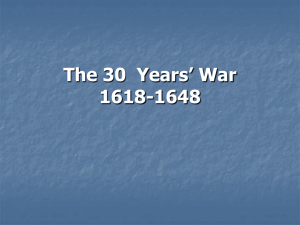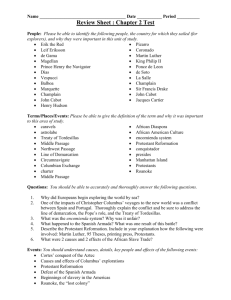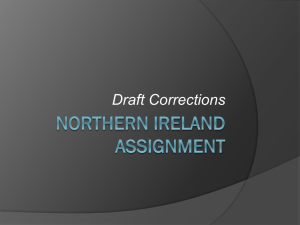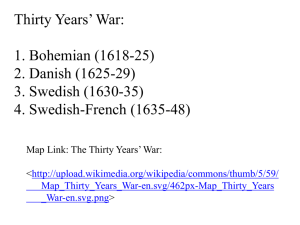30 years war
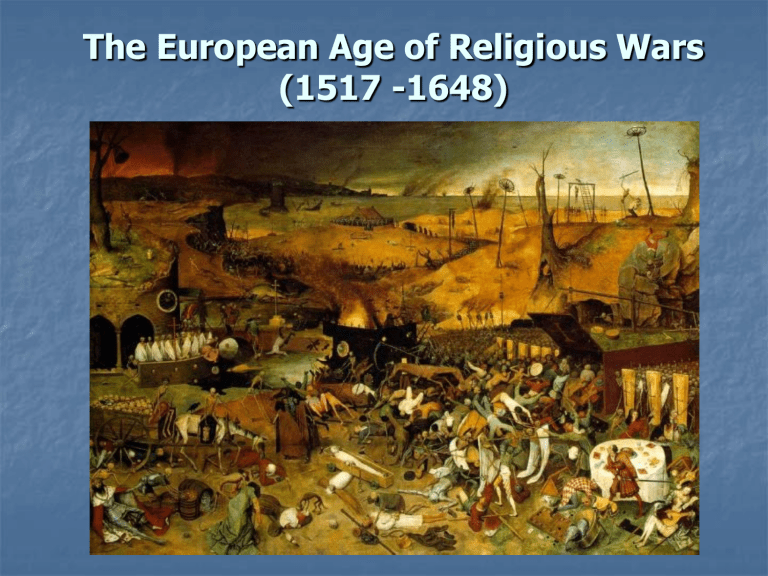
The European Age of Religious Wars
(1517 -1648)
European
Religious
Divisions – 16
th
17
th
century
The Thirty Years’ War was a series of conflicts that began early in the 17th century in the Holy Roman
Empire and finally involved much of Europe.
It started as a conflict between Protestants and
Roman Catholics but soon became a struggle for political power between nations.
The 30 Years’ War
Four Phases of the
30 Years’ War:
1. Bohemian Phase
(1618-1625)
2. Danish Phase
(1625-1630)
3. Swedish Phase
(1630-1635)
4. French Phase
(1635 – 1648)
Historical Background
By 1600, Protestants outnumbered Catholics in
Bohemia but the Protestants were fragmented into denominations or sects.
Holy Roman Emperor Rudolph II issued a
Letter of Majesty
granting some limited freedoms and tolerance to Protestants but Rudolph died before Protestants fully enjoyed the limited freedoms.
Catholics prohibited Protestants from building churches in towns where Protestant churches did not already exist.
Ferdinand II was to be the new King of Bohemia and
Protestants feared for the worst.
Holy Roman Empire 1618
The war began in
Bohemia. There in 1618 the Protestant nobility refused to recognize
Ferdinand II, soon to be
Holy Roman emperor, as their king.
Instead they chose
Frederick V, the
Palatine elector. This brought on a war involving the member states of the
Holy Roman Empire.
Ferdinand the Catholic
Defenestration of Prague
Some Protestants set up a meeting with
Catholic officials in Prague on May 23,
1618 but the meeting went badly; the
Protestants seized two Catholic officials and tossed them out of the window.
This event is known as The
Defenestration of Prague. The word defenestrate comes from Latin word for
“window” and means “out the window.”
They survived the fall, Protestants saying because they landed in a heap of horse manure, and Catholics saying that angels saved them.
This was the spark that ignited the 30 Years’
War.
Count of Tilly
Battle of White Mountain
Christian IV of Denmanrk
German and Spanish forces under the count of Tilly defeated the
Bohemians in 1620 at White
Mountain. Bohemia became an
Austrian crown land, and
Ferdinand was crowned king.
At this point Ferdinand could have made peace, but he insisted that
Protestantism be wiped out. This attitude aroused the Protestant rulers of England, Holland, and
Denmark. They sent an invading army under King Christian of
Denmark.
Albrecht von Wallenstein
Between 1625 and 1629 the Danish army suffered a series of losses and was finally driven out of
Germany by a general called Albrecht von
Wallenstein. His men roved the country, robbing farms and torturing people.
Wallenstein Palace
Edict of Restitution
Neutral Protestant rulers were aroused to join the battle when Ferdinand signed the Edict of
Restitution.
This document forced all
Protestants to give up any
Catholic property acquired since 1555.
Gustavus Adolphus of
Sweden invaded Germany in 1630, but was killed in battle 1632.
France tries to defeat the
Habsburgs
At this point France, under the guidance of Cardinal Richelieu, entered the war on the Protestant side in a political rather than religious move Richelieu saw a chance to defeat the Spanish and
Austrian Hapsburgs. He sent troops under Turenne and Condé, and the tide turned against
Ferdinand.
Peace of Westphalia
For the next 14 years fighting by French, Spanish, Swedish, and German troops went on in
Germany, Italy, Flanders, and the Pyrenees.
In 1648 Ferdinand III, who had succeeded his father, saw that further warfare was useless and signed the Peace of Westphalia on October 24. Word of the peace arrived as the French were preparing for the siege of
Prague.
Consequences of the War
The Thirty Years’ War marked the end of one era and the beginning of another. It began an era in which nation-states struggled for territorial and political power.
It ended the dominance of the powerful
Hapsburg family and began the era in which
France was the strongest nation in Europe.
It ended an era of Spanish military domination.
It also ushered in an era in which states completed the long process of centralizing their governments, becoming what we recognize today as modern nations.
Les misères et les malheurs de la guerre
Jacques Callot (1592 – 1635)
The war reduced the population of Germany by more than half in some places.
Education and agriculture were halted. There were not enough people left to rebuild and to replant. Religious unity was not established. Inflation was rampant and trade declined.
Loss of
German
Lives in
30 Years’
War
Other Wars of Religion
1.
German
Peasants’ War
(1520s)
Europe's largest and most widespread popular uprising prior to the French
Revolution of 1789. The fighting was at its height in the spring and summer of
1525. Peasants were inspired in part by the teachings of Martin Luther, although he did not agree with the uprisings.
2. War of German Princes against
Emperor Charles V (1520s-1555)
(Catholic) Charles defeated a group of Protestant princes at Mühlberg in April 1547.
Nevertheless, only eight years later he was forced to allow the Peace of Augsburg, which acknowledged the legitimacy of Lutheranism within the Holy Roman Empire.
3. Civil War In France (1562-1598)
St. Bartholomew ´s Day Massacre 1572
The French Wars of Religion were a series of wars that took place in
France over a span of 36 years, between 1562-1598.
They were mainly fought between the French Catholics and the French
Protestants or Huguenots.
French noble families of the
House of Guise and the House of Bourbons were also involved. Foreign monarchs supported different sides.
Finally King Henry IV
(who had converted from Calvinism to
Catholicism to satisfy the majority of the
French people who were Catholics) signed the Edict of
Nantes, granting religious rights to
Huguenots.
